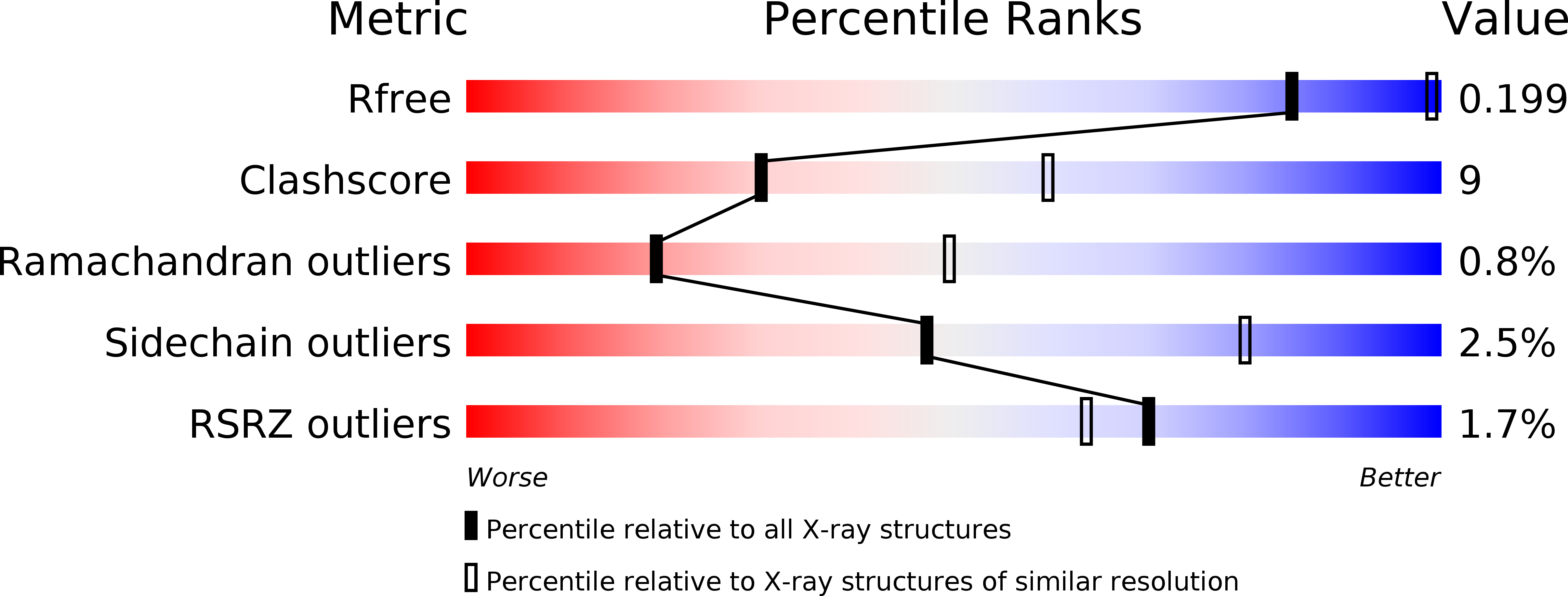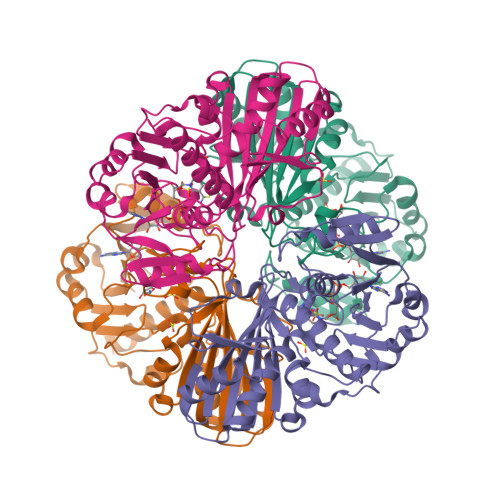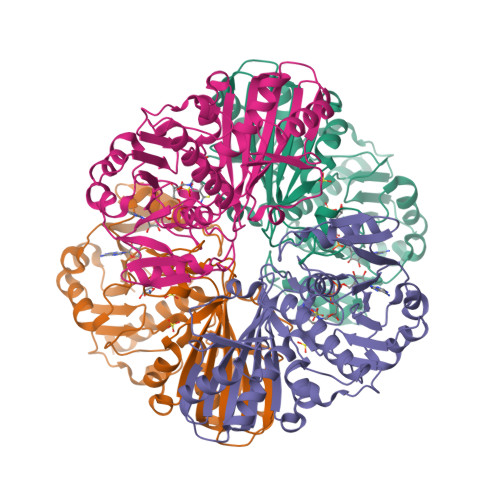Structures of D-glyceraldehyde-3-phosphate dehydrogenase complexed with coenzyme analogues.
Shen, Y.Q., Song, S.Y., Lin, Z.J.(2002) Acta Crystallogr D Biol Crystallogr 58: 1287-1297
- PubMed: 12136140
- DOI: https://doi.org/10.1107/s090744490200999x
- Primary Citation of Related Structures:
1IHX, 1IHY - PubMed Abstract:
Crystal structures of GAPDH from Palinurus versicolor complexed with two coenzyme analogues, SNAD(+) and ADP-ribose, were determined by molecular replacement and refined at medium resolution to acceptable crystallographic factors and reasonable stereochemistry. ADP-ribose in the ADP-ribose-GAPDH complex adopts a rather extended conformation. The interactions between ADP-ribose and GAPDH are extensive and in a fashion dissimilar to the coenzyme NAD(+). This accounts for the strong inhibiting ability of ADP-ribose. The conformational changes induced by ADP-ribose binding are quite different to those induced by NAD(+) binding. This presumably explains the non-cooperative behaviour of the ADP-ribose binding. Unexpectedly, the SNAD(+)-GAPDH complex reveals pairwise asymmetry. The asymmetry is significant, including the SNAD(+) molecule, active-site structure and domain motion induced by the coenzyme analogue. In the yellow or red subunits [nomenclature of subunits is as in Buehner et al. (1974). J. Mol. Biol. 90, 25-49], SNAD(+) binds similarly, as does NAD(+) in holo-GAPDH. While, in the green or blue subunit, the SNAD(+) binds in a non-productive manner, resulting in a disordered thionicotinamide ring and rearranged active-site residues. The conformation seen in the yellow and red subunits of SNAD(+)-GAPDH is likely to represent the functional state of the enzyme complex in solution and thus accounts for the substrate activity of SNAD(+). A novel type of domain motion is observed for the binding of the coenzyme analogues to GAPDH. The possible conformational transitions involved in the coenzyme binding and the important role of the nicotinamide group are discussed.
Organizational Affiliation:
National Laboratory of Biomacromolecules, Institute of Biophysics, Chinese Academy of Sciences, Beijing 100101, People's Republic of China.


















